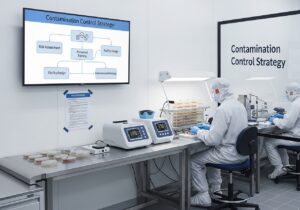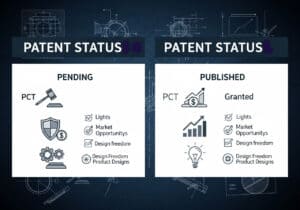Did you know that plastic makes up 60% to 80% of marine waste? Shockingly, 90% of floating waste in seas is plastic. This harms our planet’s ecosystems greatly. Tiny particles, known as microplastics, are less than 5 millimeters. They present a critical environmental crisis. This piece explores the issues, effects, and fixes for environmental pollution by microplastics and plastic waste accumulation.
Punti Chiave
- I materiali plastici costituiscono tra le 60% e le 80% dei rifiuti marini.
- 90% dei rifiuti che galleggiano negli oceani è plastica.
- Microplastics are particles smaller than 5 millimeters.
- Le persone consumano in media 39.000-52.000 particelle di microplastica all'anno.
- Microplastics have been detected in human organs and tissues.
Introduzione alle microplastiche
Le microplastiche sono un tema importante negli studi ambientali perché sono ovunque e possono essere dannose. Per capirle, dobbiamo sapere cosa sono, da dove vengono e come vengono classificate.
Definizione di microplastica
Le microplastiche sono piccoli pezzi di plastica lunghi meno di 5 millimetri. Provengono da tutti i tipi di oggetti in plastica e sono una parte importante dell'inquinamento da fibre minuscole. Il termine "microplastiche" copre un'ampia gamma di fonti e usi, ma dimostra che sono comuni nel nostro ambiente.
Classificazione e fonti
Microplastics fall into two groups: primary and secondary. Primary microplastics are made on purpose, like cosmetic beads and manufacturing pellets. For example, using an exfoliant once can send up to 94,500 microbeads into nature. Secondary microplastics break off from bigger plastic things, like bottles and bags, over time.
- Tessili sintetici
- Pneumatici
- Polvere di città
- Segnaletica stradale
Queste fonti contribuiscono notevolmente all'inquinamento da microplastica che si registra in tutto il mondo. Ogni anno, da 4 a 14 milioni di tonnellate di inquinamento da plastica potrebbero entrare negli oceani. È sorprendente che oltre 114 specie acquatiche siano state trovate con microplastiche al loro interno.
| Fonte | Contributo |
|---|---|
| Tessili sintetici | Microfibre nelle acque reflue del lavaggio dei vestiti |
| Pneumatici | Polvere da pneumatico usura durante la guida |
| Polvere di città | Particelle provenienti dall'attività urbana |
| Segnaletica stradale | Particelle di usura provenienti dalla segnaletica orizzontale |
Le microplastiche si trovano nell'acqua potabile, negli alimenti e persino nel sangue. La ricerca mostra che 77% delle persone studiate avevano plastica nel sangue. Nel nostro corpo entrano circa cinque grammi di microplastiche alla settimana, pari alle dimensioni di una carta di credito. Questo problema è preoccupante perché plastica richiedono molto tempo per decomporsi.
Il fatto che le microplastiche si trovino da laghi remoti fino al nostro corpo evidenzia l'urgente necessità di trovare soluzioni e gestire meglio questo problema.
Contesto storico dell'uso della plastica
La storia della plastica inizia a metà del XIX secolo. John Wesley Hyatt realizzò il primo polimeri sintetici nel 1869. Utilizzò la cellulosa ricavata dalle fibre di cotone. L'obiettivo era quello di imitare sostanze come la tartaruga e l'avorio. Questo diede inizio a una rivoluzione dei materiali.
Sviluppo dei polimeri sintetici
Nel 1862, Alexander Parkes creò la prima plastica artificiale, la "Parkesina". Questo fu un grande cambiamento. Consentì di produrre in serie articoli che non facevano affidamento sulle scarse risorse naturali. Questi passi sono stati fondamentali per il futuro della plastica.
Boom della plastica nel secondo dopoguerra
Dopo la Seconda Guerra Mondiale, l'uso della plastica è salito alle stelle. Le materie plastiche erano fondamentali in molti settori perché sono resistenti e durano a lungo. Durante la guerra, la produzione di plastica negli Stati Uniti aumentò del 300%. Innovazioni come i paracadute in nylon e le finestre in plexiglas furono importanti.

Dopo la guerra, le materie plastiche hanno iniziato a sostituire i materiali tradizionali. Venivano utilizzate per la produzione di automobili, imballaggi e mobili. Tuttavia, la durata della plastica divenne presto un problema. Non si decomponevano facilmente, generando rifiuti e inquinamento.
| Statistica | Dettagli |
|---|---|
| Prima plastica sintetica | 1869 di John Wesley Hyatt |
| Aumento della produzione nella Seconda Guerra Mondiale | 300% negli Stati Uniti |
| Sostituzione dei materiali tradizionali | Acciaio, carta, vetro e legno |
| Consapevolezza dell'impatto ambientale | Anni '60-'70 |
Come le microplastiche raggiungono i corpi idrici
Le microplastiche sono minuscole particelle di meno di 5 mm. Sono presenti ovunque nel nostro ambiente, soprattutto nell'acqua. Provengono da molti luoghi e viaggiano in modi diversi per arrivare negli oceani e nei laghi. Sapere come ciò avviene è fondamentale per arginare il problema delle microplastiche. microplastiche in acqua.
Microplastiche primarie
Microplastiche primarie sono piccole materie plastiche realizzate appositamente per essere utilizzate nei prodotti e nell'industria. Sono presenti in oggetti come gli scrub per il viso e sono utilizzati per produrre oggetti di plastica. Anche dopo il Microbead-Free Waters Act del 2015, rappresentano ancora un grosso rischio a causa delle loro piccole dimensioni e del loro ampio utilizzo.
Microplastiche secondarie
Microplastiche secondarie sono pezzi di plastica più grandi che si sono rotti. La luce del sole, il vento e l'acqua contribuiscono a questo processo. Uno studio ha dimostrato che 91% di questi pezzi in un fiume erano secondari, principalmente di polietilene. Le fonti sulla terraferma rappresentano una parte importante del problema, causando fino a 80% dell'inquinamento.
Percorsi verso oceani e laghi
Le microplastiche arrivano negli oceani e nei laghi in molti modi. Possono viaggiare attraverso i fiumi, il deflusso delle città e le acque reflue. Uno studio evidenzia che le microfibre, provenienti dal lavaggio dei vestiti, sono uno dei principali tipi di microplastica presenti nell'acqua. Esse costituiscono circa 35% delle microplastiche presenti negli oceani.
Ci sono modi per rimuovere la maggior parte di queste microfibre, ma abbiamo bisogno di leggi, tecnologia e strumenti finanziari. In luoghi come l'Europa e il Nord America, i fanghi di depurazione depositano molte microplastiche nel suolo. Bruciare questi rifiuti può aiutare. Affrontare il problema del deflusso è fondamentale per affrontare il problema delle microplastiche nelle nostre acque.
I pericoli della contaminazione da microplastica
Le microplastiche sono minuscole particelle sintetiche che rappresentano una grande minaccia per l'ambiente. Provengono da varie fonti, come i vestiti lavati, la polvere della città, le navi e i prodotti per la pulizia. Essendo così piccole, gli animali marini possono facilmente ingerirle. Questo dà inizio a una catena di contaminazione nella catena alimentare.

Queste particelle non scompaiono. Provengono dalle attività umane che scompongono le plastiche più grandi in pezzi minuscoli. Se non vengono catturate dal trattamento delle acque reflue, possono finire dentro di noi, mettendo a rischio la nostra salute. È un dato di fatto che le microplastiche sono state trovate all'interno del corpo umano, dai polmoni allo stomaco.
Le microplastiche causano danni fisici alla vita oceanica. Quando le creature marine le ingeriscono, possono subire danni agli organi e stress. Questo può portare a una cattiva alimentazione, infiammazione, riduzione della capacità riproduttiva e morte. Questi effetti alterano l'equilibrio degli ecosistemi marini.
Il problema delle microplastiche è mondiale. Sono state trovate dalle terre ghiacciate dell'Antartide alle profondità marine dell'Atlantico. Gli studi dimostrano persino che danneggiano i topi, danneggiando la loro digestione e la loro salute riproduttiva.
In luoghi come i Paesi Bassi e la Germania, la ricerca si sta espandendo sulle microplastiche sulla terraferma. A livello globale si sta cercando di combattere l'inquinamento da microplastiche. Paesi come la Corea del Sud, gli Stati Uniti, la Francia e l'Unione Europea hanno messo in atto delle regole. Queste includono il divieto di utilizzare le microplastiche in alcuni prodotti e attività commerciali.
“The persistence and pervasiveness of microplastics in our environment require immediate and comprehensive action to prevent further contamination and protect both ecosystems and human...
You have read 41% of the article. The rest is for our community. Already a member? Accedi
(e anche per proteggere i nostri contenuti originali dai bot di scraping)Comunità Innovazione.mondo
Accedi o registrati (100% free)
Visualizza il resto di questo articolo e tutti i contenuti e gli strumenti riservati ai soci.
Solo veri ingegneri, produttori, designer, professionisti del marketing.
Nessun bot, nessun hater, nessuno spammer.Domande frequenti
Cosa sono le microplastiche?
Le microplastiche sono minuscoli frammenti di plastica di dimensioni inferiori a 5 millimetri. Provengono dalle attività umane. Si trovano negli oceani, nei laghi e persino nel suolo.
Come vengono classificate le microplastiche?
Esistono due tipi di microplastiche: primarie e secondarie. Quelle primarie sono fatte apposta per oggetti come i cosmetici. Quelle secondarie si staccano da pezzi di plastica più grandi.
Quali sono le principali fonti di microplastiche?
Provengono principalmente da prodotti di bellezza, vestiti in fibre sintetiche, pneumatici che si usurano e grandi oggetti in plastica che si rompono.
Quando è stata sviluppata la plastica sintetica?
La prima plastica artificiale è stata creata nel 1861. Il suo uso è esploso dopo la Seconda Guerra Mondiale perché era così utile per molte cose.
Come entrano le microplastiche negli ambienti acquatici?
Le sostanze chimiche entrano nell'acqua in diversi modi. Si va dai fiumi che li trasportano al deflusso delle città e delle acque reflue.
Quali sono i pericoli delle microplastiche?
Microplastics harm ecosystems and animals, leading to deaths. For humans, they carry deadly toxins that work their way up the food chain, hurting biodiversità.
Che impatto hanno le microplastiche sulla salute umana?
Piccolo particelle di plastica si raccolgono in parti del corpo importanti come il fegato. Le sostanze in questione alterano le funzioni corporee più importanti, danneggiando il sistema ormonale e immunitario.
Quali effetti hanno le microplastiche sulla vita marina?
Gli animali marini mangiano per errore le microplastiche, causando problemi di digestione e nutrizionali. Queste plastiche, ricche di sostanze nocive, possono arrivare fino ai nostri piatti, sollevando preoccupazioni riguardo a sicurezza alimentare.
Quali soluzioni tecniche esistono per ridurre l'inquinamento da microplastica?
Le soluzioni prevedono la creazione di filtri migliori, l'utilizzo di materiali ecologici e l'aumento della consapevolezza pubblica e delle leggi. Queste misure mirano ad affrontare l'inquinamento alla fonte e a risolverlo in modo efficace.
Link esterni sull'inquinamento da microplastiche
Standard internazionali
(passa il mouse sul link per vedere la nostra descrizione del contenuto)
Glossary of Terms Used
Per- and Polyfluoroalkyl Substances (PFAS): Un gruppo di sostanze chimiche di origine umana caratterizzate da legami carbonio-fluoro, note per la loro persistenza nell'ambiente e la resistenza alla degradazione. Comunemente utilizzate in applicazioni industriali e prodotti di consumo, sono associate a diversi rischi per la salute.
Positron Emission Tomography (PET): una tecnica di imaging medico che rileva i raggi gamma emessi dall'annichilazione dei positroni, utilizzata per visualizzare i processi metabolici nei tessuti, spesso impiegando radiotraccianti per valutare condizioni quali cancro, disturbi neurologici e malattie cardiovascolari.











Una lettura interessante! Ma le microplastiche non sono solo un sintomo della nostra cultura consumistica più ampia e usa e getta? Affrontiamo la causa principale!
E che dire di soluzioni innovative come le plastiche biodegradabili?
È incoraggiante vedere gli sforzi innovativi e le azioni legislative intraprese per combattere le microplastiche, soprattutto in Europa.
Evidenziate il ruolo del comportamento dei consumatori nella riduzione dei rifiuti di plastica e nella promozione di alternative sostenibili. Incoraggiare i singoli a ridurre al minimo la plastica monouso e a sostenere le aziende impegnate in pratiche eco-compatibili è fondamentale!
Una lettura interessante! Abbiamo già delle soluzioni tecniche reali e praticabili o stiamo ancora grattando la superficie?
Sebbene l'articolo abbia trattato le soluzioni tecniche, ha tralasciato i potenziali cambiamenti politici. Potrebbero essere leggi più severe la vera risposta al problema delle microplastiche?
Leggi più severe da sole non risolvono il problema delle microplastiche. L'innovazione e la responsabilità personale sono fondamentali.
Post correlati
Strategia di Controllo della Contaminazione e 26 Buone Pratiche per la Camera Bianca
Da GMP a cGMP: la Guida Completa alla Padronanza
Validazione del Processo IQ OQ PQ: Teoria e Prassi Complete
Le strategie del “Lone Nut”, del “First Follower” e del “Fast Follower”
I 20 Migliori Utilizzi dei Proxies per l'Ingegneria
Come Vendere Ghiaccio Agli Eschimesi (ovvero Trucchi di Marketing)